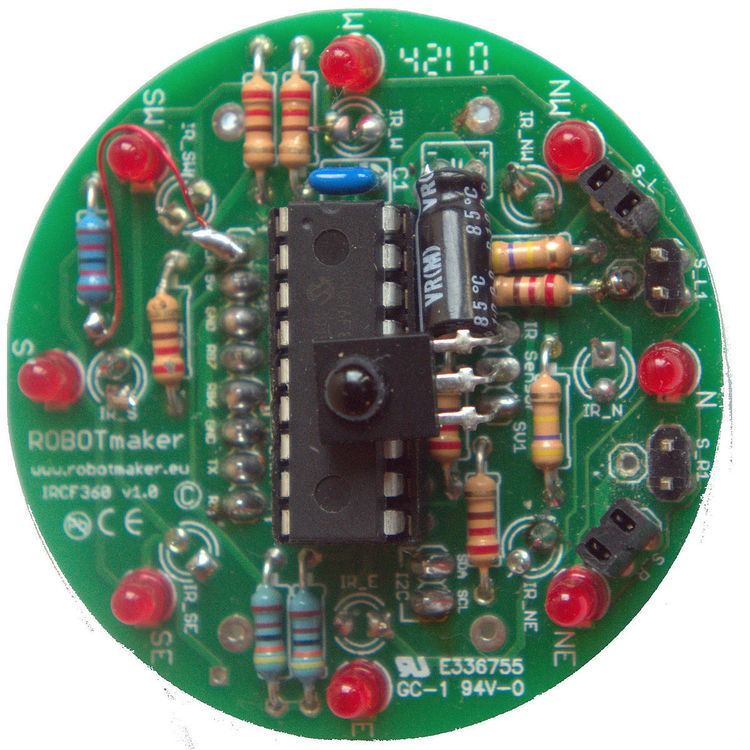Developer ROBOTmaker | Power 0.5 W (model A) | |
 | ||
Release date March 1, 2012; 5 years ago (2012-03-01) CPU Microchip PIC16F88 8 MHz internal oscillator, 200 nanosecond instruction execution, 35 single word instructions,CMOS Flash-based 8-bit microcontroller packs Microchip’s powerful PIC® architecture into an 18-pin package, , a capture/compare/PWM, an Addressable USART, (I²C™) bus, 10-bit Analog-to-Digital (A/D) converter and 2 Comparators. Memory 256 bytes of EEPROM data memory bytes | ||
Infrared Control Freak 360 (IRCF360) is a 360 degree proximity sensor and a motion sensing devices, developed by ROBOTmaker. The sensor is in BETA developers release as a low cost (software configurable) sensor for use within research, technical and hobby projects such as Maker Faire type projects, Microbotics, Kinetic art / art, crafts, engineering, UAV, Science, Technology and alternative music type of projects.
Contents
360 degree proximity sensing
The 360 degree sensor was originally designed as a short range micro robot proximity sensor and mainly intended for Swarm robotics, Ant robotics, Swarm intelligence, autonomous Qaudcopter, Drone, UAV, multi-robot simulations e.g. Jasmine Project where 360 proximity sensing is required to avoid collision with other robots and for simple IR inter-robot communications. Other uses have since been identified. Stacked 360 degree sensors gives a spherical "bubble" of proximity sensing required for 3D space sensing, such as with Unmanned aerial vehicle.
To overcome certain limitation with Infra-red (IR) proximity sensing (e.g. detection of dark surfaces) the sensing module includes ambient light sensing and basic tactile sensing functionality during forward movement sensing/probing providing photovore and photophobe robot swarm behaviours and characteristics.
360 degree sensor / 3D Motion sensor / HID device
Certain features of the 360 sensor enabled it also to be used as an independent 3D motion sensor for use within other computer applications where non-tactile input is required (i.e. compared to a mouse, joystick, keyboard which require physical contact). It is connected to a PC via the USB port. The device can be configured as a joystick, keyboard, mouse or midi device, for example where on-line 3D gaming applications require and as an alternative Human interface device (HID) for people with disabilities - enabling a wider range of users to control and interact with a PC/MAC/Tablet/SmartPhone using a more natural user interface through finger and hand gestures. It can be used together with the Windows7 voice recognition or with other HID devices to switch functionality and thereby reducing non-value added mouse movements.
Some examples of use are:
A project named Sensorium Project was started aimed at broadening the Sensors audience beyond its typical robot sensor usage. To Demonstrate the sensor's functionality, opensource Java based Integrated Development Environments (IDE) are used, such as Arduino and Processing (programming language). The java programs / sketches have all been released to public domain for advanced developers to expand the functionality and write their own Java interface apps.
